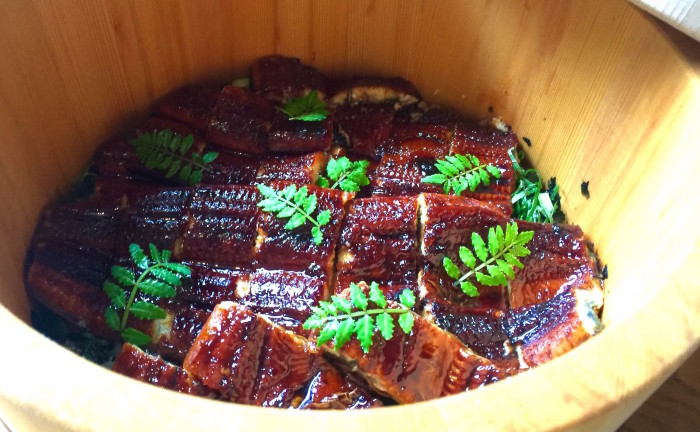What Are The Differences Between Freshwater And Seawater Eel?
A favorite dining-out story of mine goes something like this: I recommend an omakase-only sushi joint in New York City to a friend and his girlfriend for dinner. The two have a meal there and greatly enjoy it...with one notable exception. "Dude, they served us seal!" my friend gushes to me, equal parts excited and in shock, shortly afterward. "Anne was afraid to eat it, so I had her piece," he continues. "Quite different but good!" In all my years of eating sushi, I had never — ever — come across seal on a menu. Is it even legal to eat seal? Confusion galore. Something has to be amiss here.
One call to the chef — and several laughs — later, we have our answer. As suspected, the couple had not, in fact, consumed the adorably fin-footed, zoo-favorite mammal. The piece responsible for the mix-up? Anago, or, as it's commonly known in English, "sea eel." Chuckle away.
My buddy's humorous gaffe highlights a general unfamiliarity with "another" type of eel. There are two types of eel prepared in Japanese cuisine — unagi (freshwater eel) and anago (seawater eel). The former is what the majority of people would immediately associate with "eel" — it's found in virtually every sushi establishment nationwide. But it's not to be confused with its seawater counterpart; there are a number of differences.
Differences between the two species of eel center on both taste and texture. "Unagi is always richer and fattier than anago," says Masashi Ito, chef and owner of NYC hot spot Sushi Zo. "Anago tends to be leaner but it's very fluffy." Chef Isao Yamada of the city's acclaimed restaurant Brushstroke agrees. "Anago can be bland compared to rich unagi, but it has a delicate and light flavor," he says.
Yamada mentions differences in appearance, describing unagi as having a dark gray, almost black-colored skin, while anago is brownish, with white dots on the side and under its dorsal fin. Unagi's tails are also roundish, while anago's tails are pointy. Both chefs are quick to note that while anago spends its entire life in the seawater, unagi actually lays its eggs in seawater, and the young then migrate to rivers and streams to mature.
Being that the two species differ in taste, there are myriad varieties of preparation. "Unagi is mostly served with a bowl of steamed rice," says Ito. "Anago is mostly served in the form of sushi or a roll." Yamada points out that unagi is most often prepared grilled, while anago is primarily served after being simmered. Common styles of unagi include kaba-yaki (grilled with sweet soy sauce) and shiro-yaki (grilled with salt and served with wasabi.) In addition to containing twice as much fat as anago, unagi has five times the amount of vitamin A and is richer in vitamins B1, B2, D, E and calcium, according to Yamada. Costs are similar, though restaurants may pay a bit more for unagi (which is increasingly bought farm-raised.)
Got all that? Remember that there may be more to eel than meets the eye, and be sure to take note of which type you're served during your next Japanese eating adventure. Just do us all a favor and don't call it seal.


